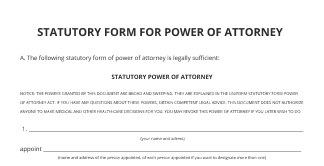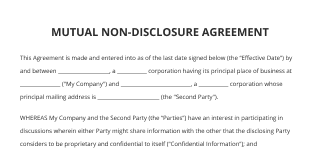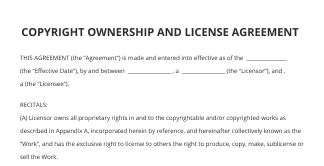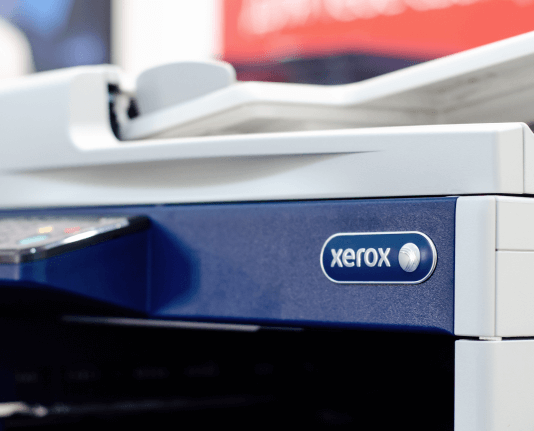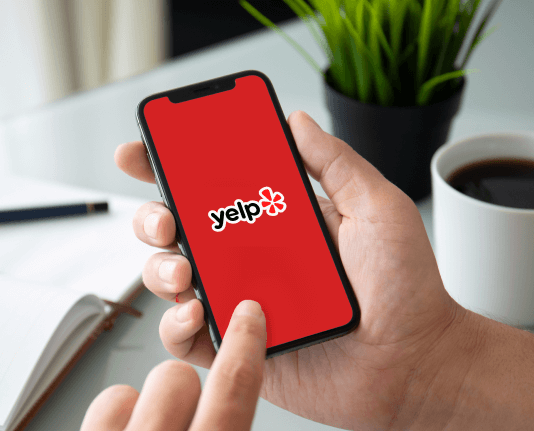Descubre Precios Asequibles De Software RFP Para Organizaciones Sin Fines De Lucro
Impulsa tu negocio con la solución de firma electrónica de airSlate SignNow
Agrega tu firma legalmente vinculante
Integra mediante API
Envía documentos condicionales
Comparte documentos mediante un enlace de invitación
Ahorra tiempo con plantillas reutilizables
Mejora la colaboración en equipo
Vea las firmas electrónicas de airSlate SignNow en acción
Soluciones de airSlate SignNow para una mayor eficiencia
Las reseñas de nuestros usuarios hablan por sí mismas






Por qué elegir airSlate SignNow
-
Prueba gratuita de 7 días. Elige el plan que necesitas y pruébalo sin riesgos.
-
Precios honestos para planes completos. airSlate SignNow ofrece planes de suscripción sin cargos adicionales ni tarifas ocultas al renovar.
-
Seguridad de nivel empresarial. airSlate SignNow te ayuda a cumplir con los estándares de seguridad globales.

Funciones de airSlate SignNow que los usuarios adoran
¡Obtenga firmas legalmente vinculantes ahora!
Preguntas frecuentes
-
¿Cuál es el precio típico del software RFP para organizaciones sin fines de lucro?
El precio del software RFP para organizaciones sin fines de lucro suele variar según las funciones y los requisitos del usuario. Normalmente, estas soluciones ofrecen opciones de precios escalonados que se adaptan a presupuestos más pequeños, ofreciendo al mismo tiempo funcionalidades esenciales. Es importante que las organizaciones sin fines de lucro exploren paquetes que se ajusten a sus necesidades específicas y capacidades financieras. -
¿Existen descuentos disponibles para organizaciones sin fines de lucro?
Muchos proveedores de software RFP, incluido airSlate SignNow, ofrecen descuentos especiales o subvenciones para organizaciones sin fines de lucro. Estos acuerdos pueden reducir significativamente el precio del software RFP para clientes sin fines de lucro, permitiéndoles acceder a funciones premium a un costo menor. Es recomendable contactar directamente a los representantes de ventas para consultar sobre descuentos disponibles para organizaciones sin fines de lucro. -
¿Qué funciones debo buscar en un software RFP para organizaciones sin fines de lucro?
Al evaluar el precio del software RFP para organizaciones sin fines de lucro, es importante buscar funciones como gestión de documentos, capacidades de firma electrónica y plantillas personalizables. Las integraciones con plataformas populares para organizaciones sin fines de lucro también pueden ser beneficiosas. Asegúrate de que el software que elijas satisfaga tanto tus necesidades actuales como futuras. -
¿Cómo mejora airSlate SignNow la experiencia para las organizaciones sin fines de lucro?
airSlate SignNow mejora la experiencia para las organizaciones sin fines de lucro ofreciendo una interfaz intuitiva y funciones potentes a precios competitivos de software RFP para organizaciones sin fines de lucro. La plataforma permite una gestión eficiente de documentos y firmas electrónicas seguras, ayudando a las organizaciones a agilizar sus operaciones. Esto ahorra tiempo y, en última instancia, contribuye a reducir la carga administrativa. -
¿Puede airSlate SignNow integrarse con otras plataformas de software utilizadas por las organizaciones sin fines de lucro?
Sí, airSlate SignNow está diseñado para integrarse de manera fluida con varias plataformas de software que suelen usar las organizaciones sin fines de lucro, como sistemas CRM y software de contabilidad. Estas integraciones pueden optimizar los flujos de trabajo y mejorar la colaboración, facilitando la gestión de proyectos y documentos. Esta capacidad de integración añade valor al precio del software RFP para usuarios sin fines de lucro. -
¿Qué opciones de pago están disponibles para las organizaciones sin fines de lucro que usan software RFP?
Las organizaciones sin fines de lucro que utilizan software RFP generalmente tienen acceso a opciones de pago flexibles, que pueden incluir suscripciones mensuales o anuales. airSlate SignNow permite diferentes esquemas de pago que se ajustan a los presupuestos y flujo de efectivo de las organizaciones sin fines de lucro. Es recomendable consultar con el proveedor sobre los planes de pago más adecuados para tu organización. -
¿Hay un período de prueba disponible para organizaciones sin fines de lucro?
Muchos proveedores de software RFP, incluido airSlate SignNow, ofrecen períodos de prueba específicamente para organizaciones sin fines de lucro, permitiéndoles probar el software antes de comprometerse con una compra. Esto permite a las organizaciones sin fines de lucro evaluar si la solución satisface sus necesidades en relación con el precio del software RFP para organizaciones sin fines de lucro. Asegúrate de aprovechar estas pruebas para evaluar las funciones y la usabilidad del software. -
¿Qué opciones de soporte están disponibles para las organizaciones sin fines de lucro que usan software RFP?
Las organizaciones sin fines de lucro que utilizan software RFP como airSlate SignNow suelen tener acceso a servicios de soporte dedicados, incluyendo recursos en línea, atención al cliente y sesiones de capacitación. Estas opciones de soporte son cruciales para garantizar que las organizaciones sin fines de lucro puedan aprovechar al máximo su inversión y resolver cualquier desafío de manera efectiva. Un soporte integral mejora el valor general del precio del software RFP para organizaciones sin fines de lucro.
Lo que dicen los usuarios activos — rfp software pricing for nonprofit
Búsquedas relacionadas con Descubre precios asequibles de software RFP para organizaciones sin fines de lucro
Rfp software pricing for Nonprofit
when deciding which technology is best for your organization the request for proposal or rfp process is a critical part of the evaluation process and i want to talk today about how to manage that rfp process in your transformation [Music] my name is eric kimberling i'm the ceo of third stage consulting we're an independent consulting firm that helps clients through their digital transformation journeys and most organizations recognize the need for an rfp as part of their evaluation process it's a critical instrument to be used a tool to be used as part of your evaluation of potential technology options but a lot of organizations don't understand what all goes into the rfp process and how to manage the rfp process how to decipher the information they get from the rfp process and those are some of the things i want to talk about here today [Music] so one of the most critical inputs into your rfp process is going to be your business requirements those specific needs that you have as an organization that are important to the evaluation of technology now there's a few things to keep in mind as you define the requirements that go into your rfp first of all not every business requirement you define needs or should go into your rfp you want to focus on prioritizing those business requirements that are most important to your organization and ideally to the extent that either yourself or someone helping you through the rfp process understands this you also want to focus on the requirements that are going to be differentiators between different systems in the marketplace so for example you don't necessarily need to include requirements that are commodity types of requirements that every erp system is going to be able to handle you want to focus on those requirements that are unique to you as an organization important to you as an organization and they're also differentiators between different systems in the marketplace the second thing to note is that of the requirements that you include in the rfp you want to make sure you prioritize those requirements identify which ones are the real critical ones the high priority must-haves deal breakers show stoppers whatever you want to call it the ones that are most important to your business and then you might have some mid tier moderate types of priorities and then you'll have your lower priorities as well and once you've done that prioritization that'll help you decide which requirements to include in the rfp which ones to exclude and at the very least as you start to get rfp responses back you'll be able to weight the responses ing to how important that specific requirement was so those are some things to keep in mind as you define your business requirements and one other thing i'll note is when you're defining your requirements be as specific as possible so something generic like create a sales order that's not nearly detailed enough you want to be specific about what about creating a sales order is unique to you and what exactly do you need to capture in a sales order in this example so be as specific as you can and be sure to capture those details in those business requirements now once you've distributed the rfps to the different vendors that you're looking into you'll get the responses back and the responses you receive from the vendors are going to be an important part of your evaluation process now one thing i'll note in the rfp responses is typically you're going to find that most of the vendors are going to say that most of the requirements that you've included in your rfp can be handled and addressed by their software so one way to think about it is if there's any way that the software could possibly sort of cover a requirement you have they're probably going to say yes it can handle that requirement and we're going to talk about this later in the same video but one thing that we want to do is differentiate between yes and no types of answers and get to the bottom of how well a software can handle a certain requirement so for example you might have three vendors that respond to an rfp they all say that they can meet one particular business requirement but not all three of them can handle that requirement as well as the others and so the key is to figure out how do we differentiate between those yes answers that you get in the rfp and i'm going to talk about that here in just a couple minutes now another input into this whole process that comes from the vendors is going to be the demo process so seeing the demos and looking at how the software works and understanding what it would look like within your organization now one thing to note about demos is i typically advise clients to view them more as a day in the life of your organization so in other words rather than having the vendor come and just show all the bells and whistles and do their typical sales pitch give them a scenario give them a number of scenarios that show how your business operates how you'd like your business to operate and let them show you how the software might work in that context and that'll give you a better flavor for how that software might fit within your organization and it'll address that first point i made about the rfp responses where if they say that they can do 98 of the requirements that you include in your rfp you can actually validate that in the demos to see how well the software handles some of those requirements so the rfp responses the demos those are two important inputs in this whole rfp [Music] process an important thing to recognize about the rfp process is that it is inherently biased you're asking for information from biased parties that are trying to sell you their software so i mentioned the rfp and how the rfp responses are probably going to be pretty biased in assuming and airing on the side of assuming that their software can handle whatever requirements you might have same with the demo process they're going to show you the strengths as much as they can they're going to try not to show you the weaknesses of the software to the extent that they can help it so how do you navigate this how do you get an objective data point and that's a really important part of the evaluation is not relying solely on the inputs you get from the vendors because that data is biased it's helpful but it's very biased so to the extent that you can use outside third parties to provide objective data to help you in the evaluation for example third stage has a database that we track over 30 000 different business requirements against all the different erp and crm and hcm systems in the marketplace and it's a quantitative comparison of how different business requirements are addressed by different software vendors and it shows you a comparison of the strengths and weaknesses of the different vendors from an objective standpoint so that's one example you also have gartner and forrester and other industry analyst reports and research that might help you and provide another semi-objective data point although one caveat to that is that oftentimes the vendors are the ones financing or commissioning the reports that those analysts put out so you want to make sure you understand how objective your data sources are and rely on the ones that are more objective and as quantitative as possible [Music] when you're going through this whole rfp process it's obviously important to identify the strengths of the software but just as important as to identify where the weaknesses are even if you've selected a software you're leaning heavily toward one particular solution be sure you poke holes in it find where the gaps are where the weaknesses are if you're not finding any weaknesses that typically means you're not doing a proper evaluation you're not looking hard enough or you're not digging deep enough or you're relying on biased information to help you in the evaluation so you should know by the time you get through the rfp process for every vendor that you're considering you should know what the strengths are but you should also know what the weaknesses are and again even in cases where a client comes to us at third stage and says we've already picked a solution or we're leaning heavily towards vendor a we'll still challenge them not necessarily to change their minds but to validate the decision and to identify risk but we'll challenge them to identify where those gaps are where those weaknesses where those blind spots and what are the ultimate pitfalls or risk that might come of that so in other words a software's weakness is where the implementation cost and duration is potentially going to be more than expected if we assume that we're only dealing with the strength of the software we're going to have an overly optimistic view of the implementation timeline and cost so identifying those weaknesses of the software are going to help us come to a realistic view of what the implementation duration and cost might look like as well as where the risks are [Music] so the software the technology itself is obviously one important dimension of the rfp process but a second important dimension of the rfp process is the implementation itself the technical implementation the technical services that go along with the software now you might be sending out an rfp that includes services and a request from the vendors themselves to provide a bid on those services or you might go to third party resellers or system integrators or implementation partners to get quotes from them on what the implementation services might be now another word of warning here again similar to the software vendor word of warning is that you're going to get overly optimistic rose-colored glass type scenarios from the vendors typically their proposals are going to assume the best they're going to assume that the project is going to be easier and faster and cheaper than it really is going to be so you do want to take it with a grain of salt but again it's an important data point to receive even though you know that information is going to be biased so you want to make sure you understand what the assumptions are coming from the different implementation partners and do is to the best you can and apples to apples comparison and typically there's different assumptions coming from different vendors so you have to normalize those responses to try and figure out how to compare them and there's a lot of art to that as well as science but in general that's the thing you want to go through is to normalize those responses and to the extent that you can be as clear as possible and how you envision the implementation going and give them the assumptions so that they're all responding to the same assumptions that's going to help you in that rfp process with the implementation technical partners as well now one of the final steps in the rfp process is to create a business case or a cost benefit analysis based on the responses that you receive in the rfp process so on one hand you have cost and the cost that you receive from both the software vendor and or the system integrator or the implementation technical partners are probably going to be overly optimistic and they're probably not going to be completely inclusive of all the costs they're going to be required to manage your implementation so this is the tricky part because the vendors are providing one input into your total cost of ownership and so the job now is to determine a couple of things one is what are those other costs that aren't included in their responses so things like data migration or data cleansing organizational change management business process improvement program management things like that are common areas where vendors typically don't include those in their costs or they assume that you're going to handle that so you want to make sure that those costs are included in your total cost of ownership and next you want to do a cost comparison of the inputs you get from the software vendors and the system integrators and when you're doing that cost comparison you not only have to rationalize and ensure that you've captured all the costs not just the vendor's cost but the total cost of ownership but you also want to make sure that you've rationalized the validity and the assumptions of what they've based their bid on and what often ends up happening is you'll find that one of the vendors for example might come in and low ball the number and you know that that's probably not realistic there's no possible way that the other vendors could be two to three times the cost and so oftentimes you find that there's a big discrepancy in the results and the responses you're getting so there's a process that we typically will help clients through to ensure that we normalize some of those numbers and come up with a realistic bid or realistic cost estimate based on the inputs that we receive in the proposals and the other thing to note too is that the degree of fit of the software is ultimately going to drive the cost up or down and the time up or down based on how good of a fit the technology is or isn't for your organization so if you have a software vendor that is the least likely fit across the board but they're coming in at the lowest cost for the implementation chances are there's something wrong because in theory that should be one of the higher cost options if it's not a good fit because it's going to take you longer to implement and there's going to be more customization and all that good stuff so there's a lot that goes into this whole business case on the cost side in addition to the cost side you also have to look at the business benefits what are the benefits that we expect to get from these different solutions and again not every solution is going to have the same business benefits different strengths and weaknesses lead to different benefits and so you ultimately and ideally would have different cost scenarios for the three or four or however many different options you're considering and once you have both of those in place then you can start to look at the overall roi and calculate the return on investment for your overall business case now once you have all this information it's time to make a decision you should have enough input at this point if you've done it right and you have enough objective data and enough bias data from the vendors you should be able to make a decision on what the best fit is and we typically find that most organizations we work with pretty easily narrow it down quickly to about two sometimes there's an obvious front runner but at the very least usually there's two that you're able to narrow it down even if you start with three or four or five different options that you're sending rfps out to so you want to make that decision based on all the information and again the key here is to make sure that you're being objective in that decision making process now i've included some other resources below that'll help you in that decision making process and give you some guidance on different software vendors how they compare to one another and other objective data points that will help in your evaluation i've included some links below including a link to our 2021 digital transformation report which includes top 10 rankings of different types of technologies and different industries as well as best practices for implementation so i encourage you to check that out as well as other resources below i hope you found this information useful hope you have a great day you
Show moreObtén más para rfp software pricing for nonprofit
- Plantilla de factura de marketing para soporte
- Plantilla de factura de marketing para contabilidad
- Plantilla de factura de marketing para Investigación y Desarrollo
- Plantilla de factura de marketing para gestión
- Plantilla de factura de marketing para Administración
- Plantilla de factura de marketing para atención al cliente
- Plantilla de factura de marketing para Atención al Cliente
- Plantilla de factura de marketing para soporte técnico
Descubre otros rfp software pricing for nonprofit
- Aumentando la Legitimidad de la Firma Electrónica para ...
- Desbloquea la Legitimidad de la Firma Electrónica para ...
- Aumentando la Legitimidad de la Firma Electrónica para ...
- Legitimidad de la Firma Electrónica para ...
- Legitimidad de la Firma Electrónica para Recursos ...
- Aumente la eficiencia de Recursos Humanos con la ...
- Aumentando la Legitimidad de la Firma Electrónica para ...
- Desbloquee la Legitimidad de la Firma Electrónica para ...
- Desbloquea la Legitimidad de la Firma Electrónica para ...
- Desbloqueando el Poder de la Legitimidad de la Firma ...
- Desbloquee la Legitimidad de la Firma Electrónica para ...
- Desbloquea la Legitimidad de la Firma Electrónica para ...
- Desbloqueando el poder de la legitimidad de la firma ...
- Desbloquea el Poder de la Legitimidad de Firma en ...
- Aumentando la Eficiencia de RRHH con Firmas ...
- Aumente la Eficiencia de RRHH con la Legitimidad de ...
- Desbloquea la Legitimidad de la Firma Electrónica para ...
- Mejore la Eficiencia de RRHH con la Legitimidad de ...
- Aumenta la Eficiencia de RRHH con la Legitimidad de ...
- Desbloqueando la Legitimidad de la Firma Electrónica ...





